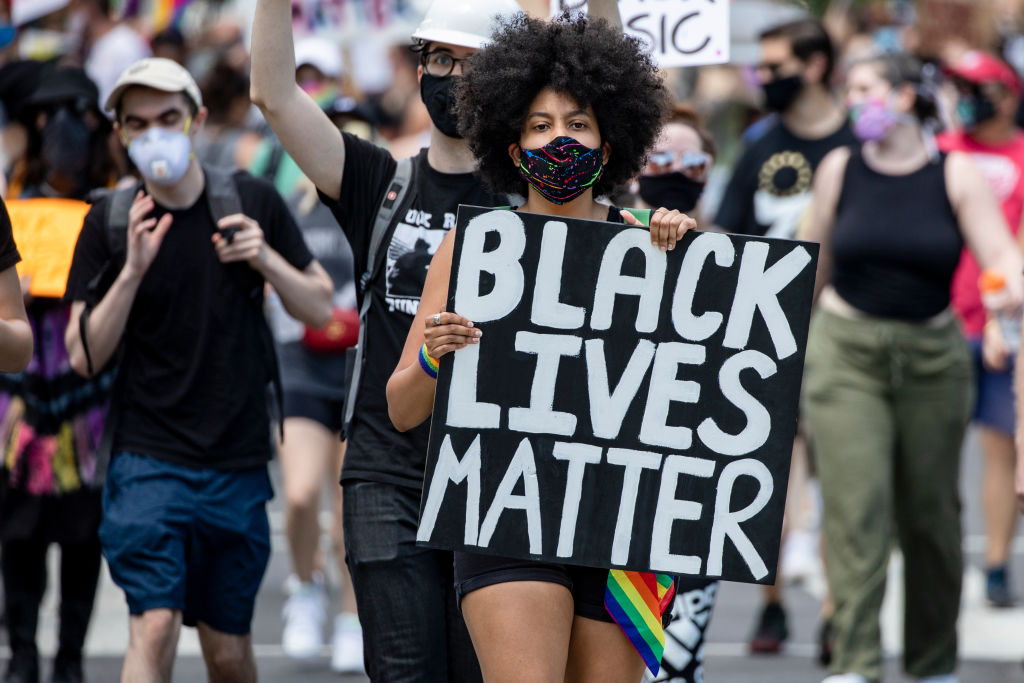
- Article
- American Politics
Blacks Experience Systematic Discrimination in the United States
June 16, 2020
The killing of George Floyd has sparked outrage and mass protests in countries around the world, leading to measures to curb police brutality. Results of audit studies conducted by Charles Crabtree, though, point to systemic racism in the United States, not only in police departments but also among elected officials and in the broader community.
* * *
On May 25, 2020, George Floyd, a 46-year-old black man, was killed by Derek Chauvin, a white Minneapolis police officer, in a dispute over $20. Chauvin and three other police officers had been dispatched to arrest Floyd after he allegedly bought a pack of cigarettes at a convenience store with a counterfeit $20 bill. During the arrest, Chauvin violently pinned Floyd to the ground, pressing his knee to Floyd’s neck. He held it there for 8 minutes and 46 seconds, after Floyd said that he couldn’t breathe, after he lost consciousness, and a full minute after the paramedics arrived on the scene.
Enraged by Floyd’s death, people, both black and white, have rallied together around the message that Black Lives Matter, protesting in hundreds of cities across the United States and the world. United in collective grief over the many black Americans who have been killed by police officers sworn to protect them, the protestors have issued a sweeping range of demands, including calls for widespread police reforms and legislation to redress racial inequalities. These largely non-violent protests have drawn renewed global attention to racial disparities in the United States.
They may potentially lead to considerable changes domestically: the officer who killed George Floyd now faces murder charges, as do the other three officers who witnessed Floyd’s killing; many other police officers who used unlawful violence against protestors have been relieved of duty; local governments and police departments across the United States are considering reforms aimed at limiting police interactions and reducing their lethality; and many more Americans now support the Black Lives Matter movement. This initial flurry of activity in response to the protests is very promising.
As many in the United States now realize, though, these positive steps are not enough. The police are not the only actors that engage in discrimination against blacks. While their acts of discrimination are the most violent and often attract the most attention, they are but one part of a much larger system of racism, repression, and social control. Indeed, insomuch as police officers come from communities, they are not likely to be separate from or unaffected by the larger systematic racist systems that they inhabit. Since police are armed—sometimes ridiculously so—and have the legal leeway to “enforce” the laws (often as they see fit), they have the potential to engage in the most dangerous types of discrimination.
But, as much of my recent research documents, many other actors in America discriminate against blacks. In my work, I typically use a type of experiment called an audit study. Generally speaking, these experiments involve the researcher studying some group of individuals (for example, city officials or human resource managers) by interacting with them (such as by requesting help or applying for a job) and then measuring how they respond. Typically, the researcher sends a communication to the individuals they are studying asking them to provide some information or service, varies some aspect of the sender (their race, for example), and then measures how the receiver responds. This simple and powerful experimental design can be used to determine whether the studied individuals respond differently to requests from people with different demographic characteristics—black vs. white, immigrant vs. native born, and so forth.
The advantage of audit studies is that they provide researchers with a measure of actual discrimination by individuals. If researchers asked people about the extent that they discriminate against individuals of certain groups, they may simply underreport their own discriminatory behaviors and attitudes. Audit studies avoid this potential pitfall by looking at individual behavior when people do not realize they are being studied (and thus cannot artificially change their behavior to look less biased to the researcher). The audit study, if well done, captures behavior in action, unaffected by social desirability bias.
In a series of audit studies, I have found that blacks face discrimination in many routine contexts and in ways that might help shed light on racial inequalities in policing and criminal justice. One study examines racial discrimination by over 11,000 elected municipal officials across America. My co-author and I sent each official with a basic request for information about a service that the city provided, randomly varying whether the sender had a name that would commonly be perceived as belonging to a white or black constituent.
We found that elected officials were almost 6 percentage points less likely to respond to requests from people who they think are black compared to people who they think are white. This is concerning as local government is often the level that most directly affects citizens’ daily lives. Within the current context, it potentially helps explain why black citizens who are used to being ignored by city officials have hit the streets. They might believe that they have to make more dramatic requests before officials will reply.
In a similar study, conducted with several coauthors, I examined the potential racial biases of 4,963 state legislators. Unlike the municipal officials that I studied, the individuals in this sample have a larger scope of jurisdiction, both geographically and in terms of the number of residents they represent. We found roughly the same pattern of discrimination against blacks. This provides additional evidence that American lawmakers do not provide the same treatment to all citizens but instead are more likely to respond to the white electorate. The downstream consequences of such pro-white favoritism are potentially profound. They might help explain, in part, why America’s criminal justice policies tilt so heavily against blacks. At the very least, it suggests that looking to elected officials to come up with solutions to America’s discrimination problem might not be promising.
Finally, in another study conducted with a large team of coauthors, I examined racial discrimination by public-school principals, an important group of street-level bureaucrats. We emailed the principals of more than 45,000 public schools and asked for a meeting, randomly varying the racial identity of the sender. Principals were 3 percentage points less likely to answer a request from an ostensibly black family compared to a white family. These results provide an important piece of additional evidence that the discrimination blacks face within American society starts at a very early age. They also hint at one of the possible mechanisms that might lead to more interactions between blacks and police officers. If blacks are treated unfairly within the school system, they are less likely to perform well academically, which could limit their career options, and place them on the margins of society, where police presence is higher.
Despite the constant stream of findings that blacks are discriminated against in America, there is some reason to be hopeful. The ongoing protests have already achieved much and might further precipitate dramatic improvements in racial equality across the United States. Unfortunately, the history of the United States shows us that any hard-fought gains toward greater egalitarianism might give rise to revanchist claims by white Americans. Researchers can play a useful role in warding off these claims by continuing to study where, how, and why discrimination occurs. Only by carefully documenting its existence and understanding its causes can we identify the policies that might be the most helpful in fighting it.


